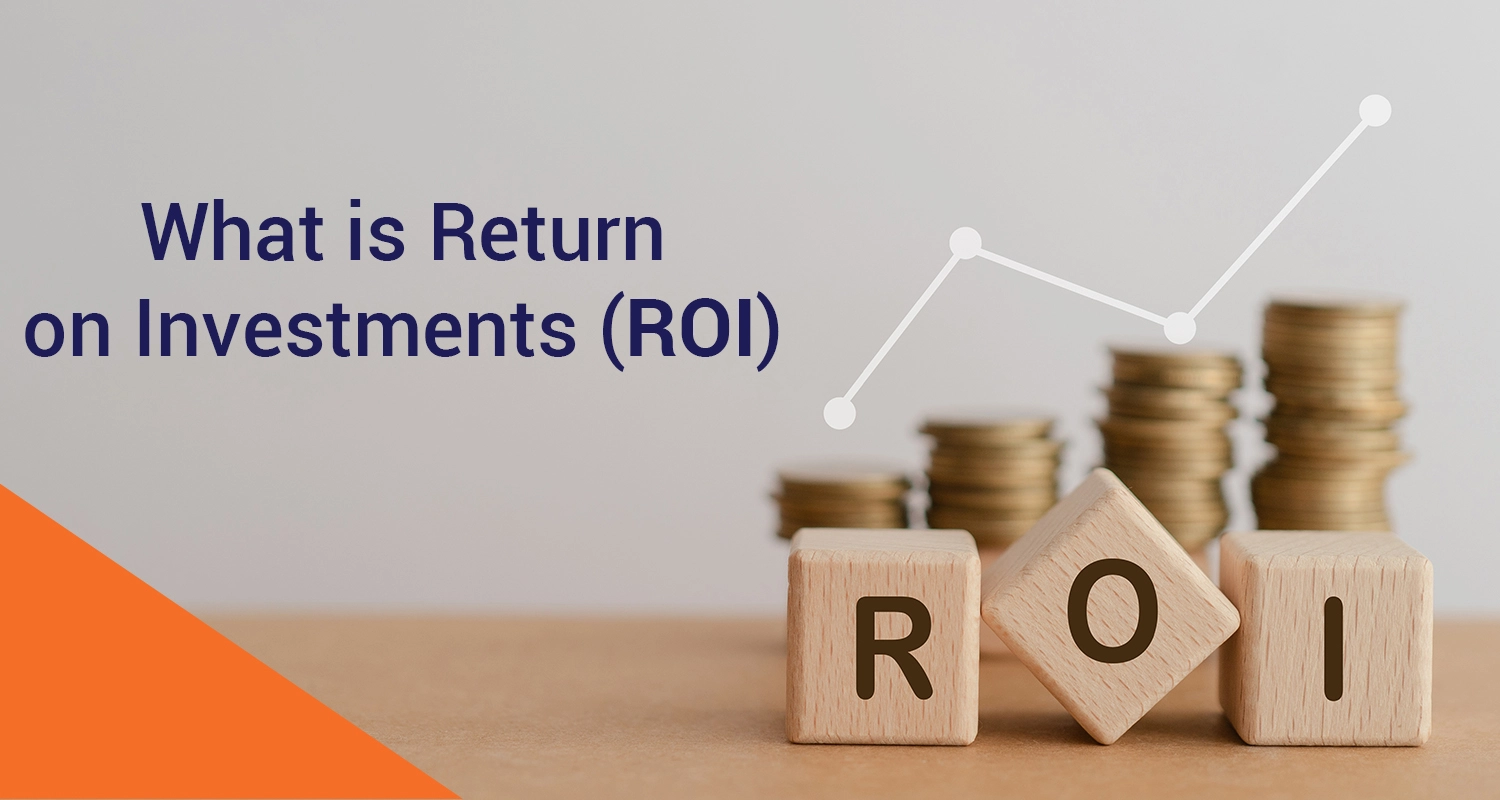ROI: Return on Investment Meaning & Calculation Formula

Curious about the secret formula that businesses use to gauge their success? If you have a business and you need to evaluate the efficiency of your investment, then you must find out the profit you make because of your investment. This profit is called ROI (Return on Investment). It is useful for your business goals to identify your financial returns. To learn how it can revolutionize your business decisions read on.
What is Return on Investment (ROI)?
ROI is a measure used to assess the efficiency or profitability of an investment. Its objective is to quantify the amount of return on a particular investment relative to the investment’s cost. It is also used to compare the efficiency of several different investments.
What are the different types of ROI?
The types of ROI are Financial ROI, Social ROI, Environmental, Marketing ROI, etc. Financial ROI is mostly used.
What is the importance of ROI
ROI is a crucial metric for investors to assess the effectiveness of an investment, supporting informed financial decision making and guiding the allocation of resources.
ROI helps in comparing different investment options and is used for budgeting or financial planning. For measuring the performance of an investment ROI is used.
How is ROI Calculated?
There are many types of the ROI formula. The two most used are shown below:
- ROI = Net Income / Cost of Investment
- ROI = Investment Gain / Investment Base
The first type of the ROI formula (net income divided by the cost of an investment) is the most used ratio
Sapna aapka. Business Loan Humara.
Apply NowHere are a few examples of ROI Calculation in Different Scenarios:
Product Launch
·Scenario: A company invests $50,000 in launching a new product.
·Costs: Manufacturing, marketing, and distribution total $50,000.
·Revenue: The product generates $80,000 in sales over a year.
ROI Calculation:
ROI = (Net profit/Investment cost) X 100
Net Profit = Investments – Cost = $80,000 - $ 50,000=$30,000
ROI = ( $30,000/$50,000)X 100 = 60%
Marketing Campaign
- Scenario: A business spends $10,000 on a digital marketing campaign.
- Costs: Advertising spend is $10,000.
- Revenue: The campaign leads to $25,000 in additional sales.
- ROI Calculation:
ROI = (Net profit/Investment cost) X 100
Net Profit = Investments – Cost = $25,000−$10,000=$15,000
ROI = ($ 15,000/ $10,000) X 100 = 150%
The above two examples show how ROI can be calculated in these business scenarios, giving a clear measure of an investment and effectiveness of different investments.
Are there any tools and software that help in calculating ROI?
Some softwares help in ROI calculation like Excel and Google Sheets, Quick Books, Hub Spot, Google Analytics, ROI Calculator Apps, and Custom Business Intelligence (BI tools).
Some of these tools may make the calculation of ROI simpler. Like softwares, the process of automatic data collection, analysis, and reporting, helps you to focus on making informed business decisions.
What are the factors that affect ROI?
The following factors help in analyzing potential ROI and in making strategic investment choices.
- Initial investment costs
- Period for ROI calculation
- Market conditions and external economic factors
- Risk and uncertainty associated with the investment
- Strategic management
- Efficiency and Productivity
How can the ROI of an investment be improved?
A well-thought-out strategy ensuring better financial performance and sustainable growth can improve your Return on Investment (ROI).
Some probable ways to improve ROI
- Aim and approach to increase revenue or reduce costs
- A continuous monitoring and analysis
- Improved innovation and technology for an effective ROI
- Case studies of companies that have successfully improved their ROI
- Concentrate on High-Return Investments
- A strong cash flow supports operations and investments
What are the Common Mistakes in ROI Calculation?
Here are some common pitfalls of ROI calculation. Avoiding them requires thorough planning, accurate data collection, and a comprehensive approach to analyzing both costs and benefits.
- Ignoring indirect costs and benefits.
- Overestimating returns or underestimating costs.
- Failing to account for the time value of money.
- Understanding the benefits of short-term gains as long-term success
- Not paying much attention to Non-Financial Benefits
- Making mistakes in accurate Cost Estimation
What are the future trends in ROI Analysis?
ROI analysis is adjusting to new technologies and evolving market conditions. Here are some key trends given below
- The ROI is impacted by the Influence of big data and advanced analytics
- Evolving methods and metrics for assessing ROI
- The role of artificial intelligence and machine learning in forecasting and improving ROI.
- Advanced Risk assessments
- Blockchain Transparency
Optimizing ROI is a multi-layered effort that needs a strategic balance of increasing revenue and managing costs while avoiding common calculation errors.
Businesses are entering an increasingly complex landscape, and future trends such as advanced analytics, ESG integration, and automated reporting are set to redefine ROI analysis. With advanced technological innovation companies can improve their investment, and make better-informed choices for sustainable growth.
FAQs
Q1. What is the importance of ROI?
Ans. ROI provides a simple way to measure the effectiveness of an investment. It helps businesses and individuals make informed financial choices and compare the potential returns of different investments.
Q2.What is considered a good ROI?
Ans. A "good" ROI differs by industry and investment type, but usually, a higher ROI means a more profitable investment. Businesses normally aim for an ROI that exceeds their cost of capital or the return they could get from other investments.
Q3.Can ROI be applied to non-financial investments?
Ans. Yes, ROI can be modified to measure the return on non-financial investments. If we calculate the benefits of time, resources, or effort in monetary terms or other measurable results, we can apply ROI for non-financial investments.
Q4. What are the limitations of ROI?
Ans. It could fail to consider the risks or non-financial advantages of an investment. ROI calculations measure returns over a given period and are dependent on time. This is a concern when assessing long-term investments that take some time to start paying off or when comparing investments with different time horizons.
Sapna aapka. Business Loan Humara.
Apply NowDisclaimer : The information in this blog is for general purposes only and may change without notice. It does not constitute legal, tax, or financial advice. Readers should seek professional guidance and make decisions at their own discretion. IIFL Finance is not liable for any reliance on this content. Read more



